Overview
Students will learn about monuments and explore transforming cardboard to
create meaning.
Materials and Tools
- Corrugated cardboard
- Smooth cardboard
- Scissors
- Exploring Cardboard Construction video
- Cardboard Exploration student slides
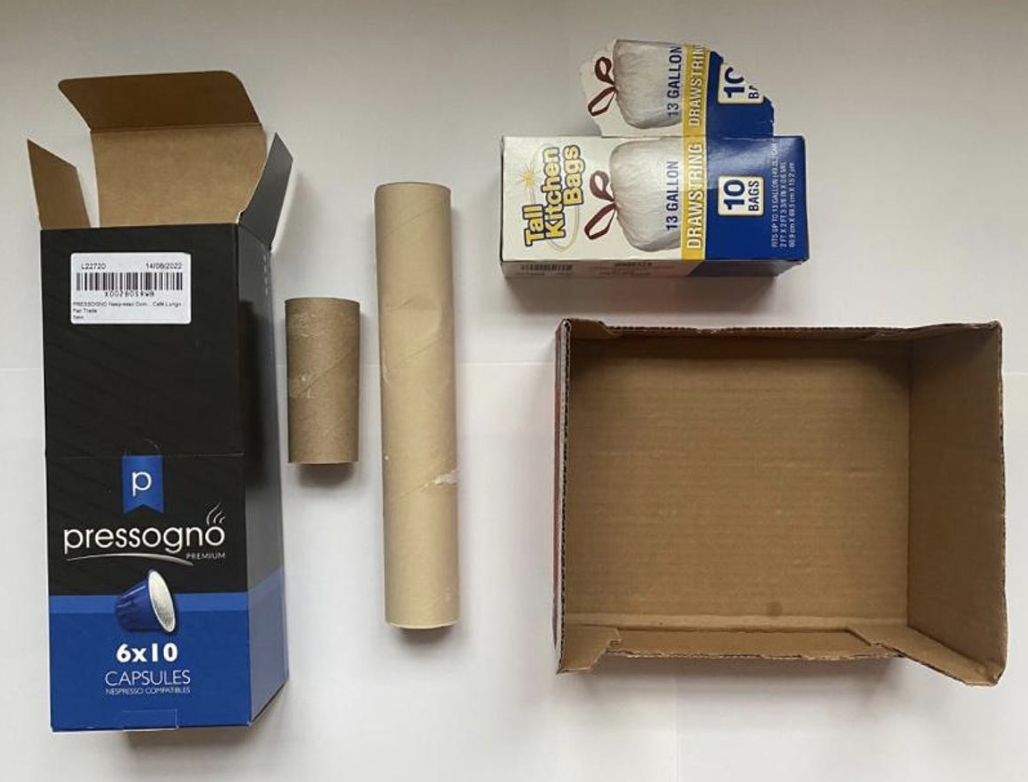
Objectives
Students will understand that:
- The purpose and meaning of monuments and how they represent and express ideas
- How to utilize experimentation as an integral part of the artistic process
Students will be able to:
- Experiment with different ways of transforming and attaching cardboard
- Identify concepts and ideas that their experiments might express
- Apply this knowledge to imagine other things that could be expressed in different ways
Activities
Note: The following steps are written with sample language you may use with your students as you go through the lesson. Explain to students that the slides and the video they see during the lesson will be shared with them so they can review the lesson on their own and continue to make more art.
Step 1: Introduction, Watch Cardboard Exploration Video (12 minutes)
In this unit, we will explore contemporary approaches to monuments and create a maquette (a model for a large-scale sculpture) that commemorates something important to you. We will be using cardboard as our medium and we will spend time experimenting with cardboard to discover its inherent qualities, strengths, and weaknesses. You will learn a variety of construction techniques and three-dimensional design concepts and use them to express your ideas.
Let’s begin by defining what a monument is.
- What is a monument?
Note: If students struggle to define the word, tell them that a monument is a statue, building, or other structure erected to commemorate a famous or notable person, event, or idea.
- What comes to mind when you think of a monument?
- What monuments do you know? How would you describe them?
- Why do you think we have monuments?
Step 2: Close Looking, with Student Slides #3-5 (15 minutes)
Monuments can take many different forms. Let’s take a close look at two images of monuments.
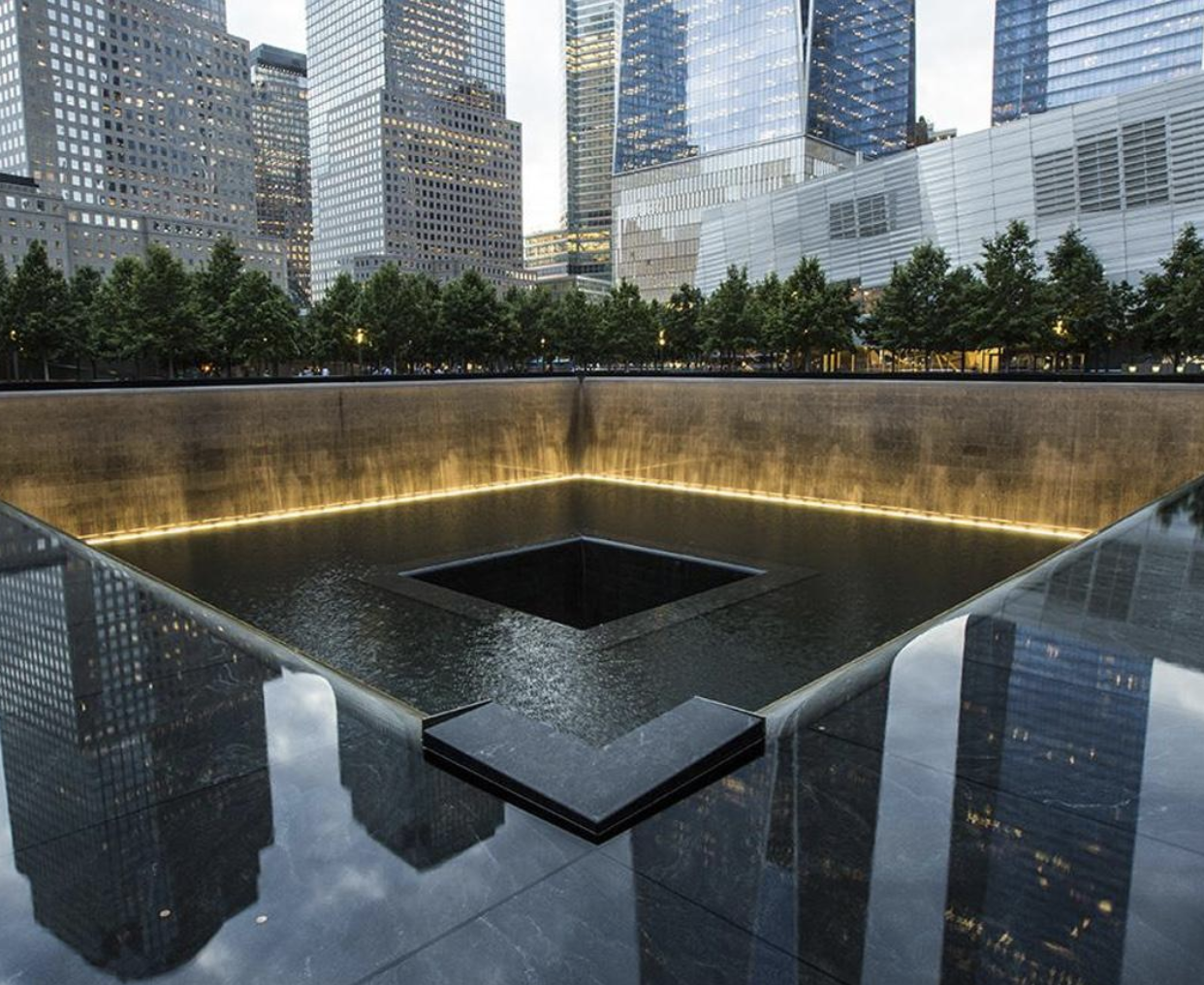
- Have you seen this monument before?
This is the National September 11 Memorial, called Reflecting Absence. It is a memorial for the 2,977 people killed in the terror attacks of September 11, 2001, and in the 1993 World Trade Center bombing.
Look closely.
- What stands out to you?
The architect, Michael Arad, turned the footprints of the original World Trade Center towers into two square, below-ground reflecting pools. Each is nearly an acre in size and is fed from all sides by waterfalls that begin just above ground level. The reflecting pools are bordered by continuous bronze panels inscribed with the names of the victims of the attacks.
- What words would you use to describe this monument?
- How does this monument relate to its surroundings?
- What does the title Reflecting Absence mean to you? In what ways does this memorial reflect absence?
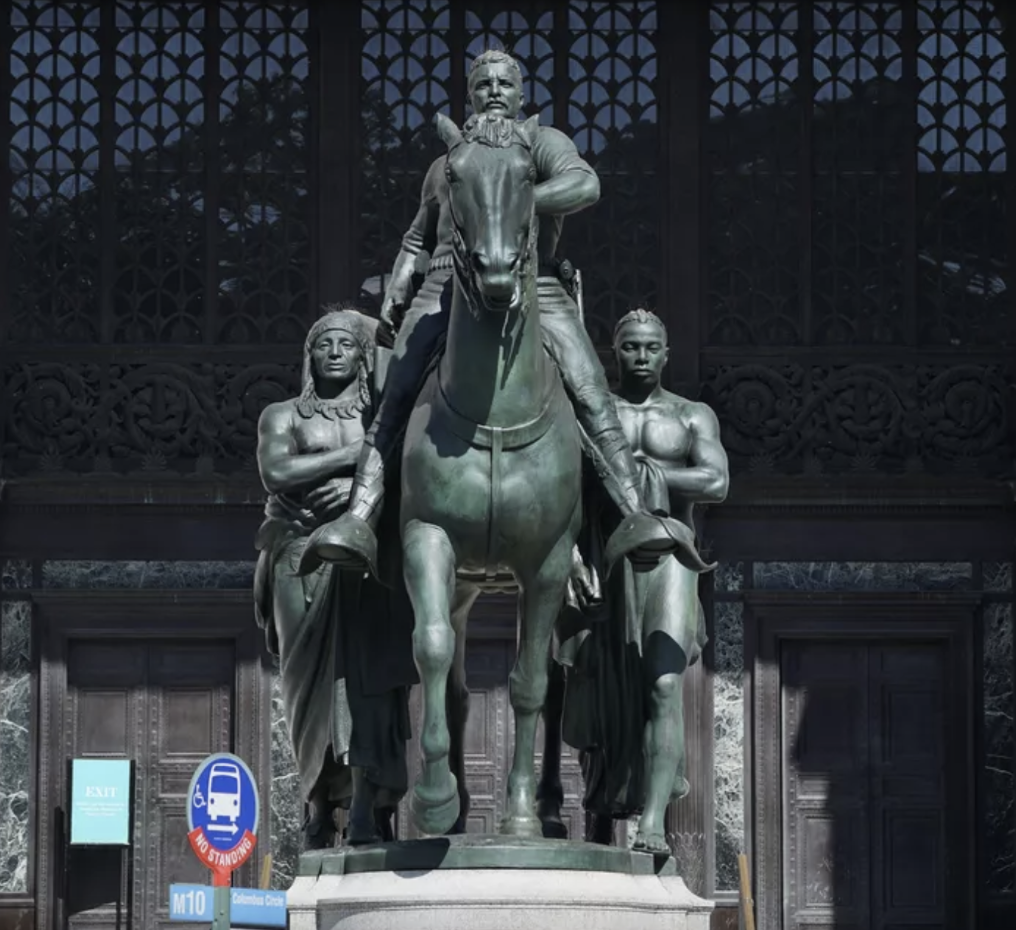
- What stands out to you as you look at this monument?
- What do you notice about the three figures? What is the same about them and what is different?
This monument, which stands in front of the American Museum of Natural History, was meant to celebrate Theodore Roosevelt, the 26th president of the United States.
- What do you think the artist wanted to convey about Roosevelt?
- What do you see that makes you say that?
Many people have fought for the removal of this monument, arguing that the depictions of the African and Native American figures and their placement in relation to Roosevelt are racist.
- How would you change this monument to tell a different story?
After a long debate, the monument will finally be removed.
- What kind of monument would you like to see in its place?
Now let’s compare the two monuments we just looked at.
- What do you notice about the forms of these two monuments?
- How are they different?
- How does the form of each monument help communicate the idea behind it?
Step 3: Exploring Cardboard: Deconstructing, Transforming, and Attaching, with Student Slides #9-12 (20 minutes)
Now that you have looked closely at two different approaches to monuments, it’s time to explore and experiment with the material you will be using to create
your own.
Please gather the following materials: corrugated cardboard, smooth cardboard, and scissors.
- What are some ways that you can change cardboard?
Look at the examples on Slides #9-12.

Slide #10 shows deconstructed and crumpled forms. Deconstructing means to take a material apart to create a new form.
- What deconstruction techniques can you identify in the image on the left? How do they create different effects?
Slide #11 shows transforming cardboard by rolling and folding.
- How do these forms express different ideas?
Slide #12 illustrates how to score, or cut, cardboard in order to make it flexible and malleable. Notice the way the artist is gripping their scissors to score the cardboard.
- Why do you suppose this is an important technique to use when you are working with cardboard?
Slide #13 shows how you can attach your pieces by weaving.
- What are some additional methods you can use to connect your pieces?
Keep all your experiments and label them.
Step 4: Expressing Ideas with Cardboard, with Student Slide #14 (10 minutes)
- What words come to mind when you think of monuments?
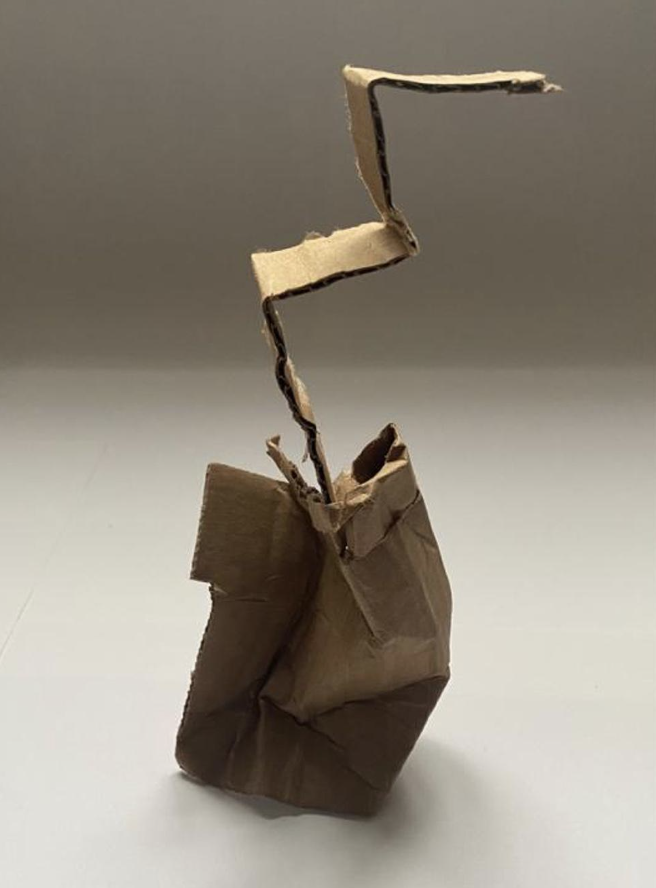
Give students a chance to respond. If they need more prompting, here are some ideas:
Strength
Fragility
Heroism
Justice
Equality
Hope
Oppression
Recognition
Visible/Invisible
- How could you express some of these big ideas through manipulating cardboard? For example, how could you change the cardboard to show fragility? How could you show strength?
Experiment with manipulating the materials to express different ideas.
Step 5: Reflection Questions for Discussion (10 minutes)
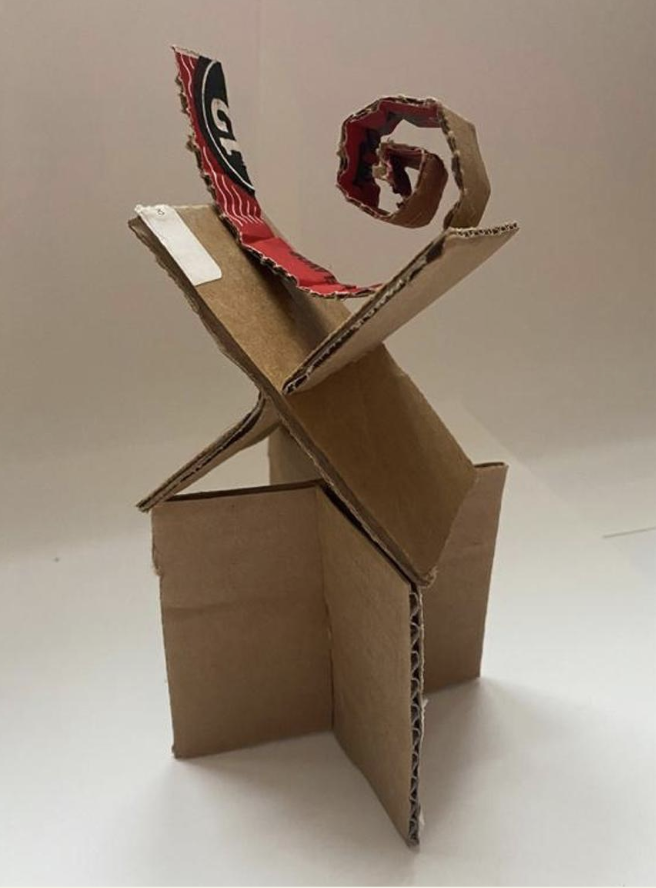
- What ideas did you express by changing the cardboard?
- What techniques did you use to express those ideas?
Vocabulary
Monument
Maquette
Construct
Deconstruct
Resources
Michael Arad and Peter Walker, National September 11 Memorial, Reflecting Absence, New York
American Museum of Natural History addresses their Theodore Roosevelt statue and the request for its removal.
